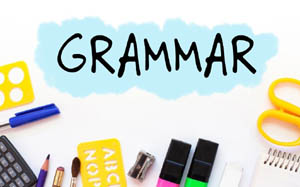 A phrasal verb is a verb + a preposition or adverb resulting in a new verb with a different meaning.
A phrasal verb is a verb + a preposition or adverb resulting in a new verb with a different meaning.
The meaning of the combination cannot usually be guessed from its separate parts, although this becomes clearer when you become familiar with how prepositions work.
Why do I need to learn phrasal verbs? Because they are used all the time in everyday English and you need to know them in order to understand and speak natural English. They are not used so frequently in business writing, but the commons one are. Therefore, it is important to learn the ones that are used most often.
Phrasal verbs consist of a verb and another word or phrase, usually a preposition. The resulting combination creates what amounts to a new verb, whose meaning can sometimes be puzzling to non-native speakers.
The problem with phrasal verbs is that their meaning is often, at first, difficult to guess, and they often mean several different things.
So, some phrasal verbs will have a literal meaning as well as an idiomatic meaning.
To look over, for instance can mean to see over something, a wall, for example; it can also mean to peruse or examine.
If someone chooses to turn up the street that is a combination of a verb and a preposition, but it is not a phrasal verb. It is a colloquial expression which means that you are turning into a road when driving.
On the other hand, if your neighbours unexpectedly turn up (appear) at a party or your brother turns up his radio, those are phrasal verbs. To come out, we are told, has eighteen different meanings.
As mentioned earlier, common phrasal Verbs are often used in business writing. They are used to express the combination of two ideas, usually involving an action, and a location, or a direction. In the sections that follow we'll introduce you to some phrasal verbs often used in business writing. We'll divide them into two areas: 1) Separable, and 2) Inseparable.
|
FOR THE FULL LESSON PLEASE LOG IN AND GO TO: (includes lesson notes + interactive practice exercises) |
Separable Phrasal Verbs
Sometimes we can separate the two parts of a phrasal verb. If the object is a noun, we can put it in two places:
| We have used up all the photocopy paper. (=used all the stock) We have used all the photocopy paper up. |
If the object is a pronoun (i.e. me, you, him, it, etc.), it must come after the verb:
| We have used it up. (NOT: used up it) |
Here is a list of common separable phrasal verbs. Use your dictionary to look up the meaning of those you aren't familiar with.
| back ... up build ... up buy ... out close ... down cut ... off fill ... in/out give ... up help ... out hold ... up keep ... down look ... up make .... up pick ... up put ... off/down run ... down take ... over try ... out turn ... on/off |
Examples of usage:




